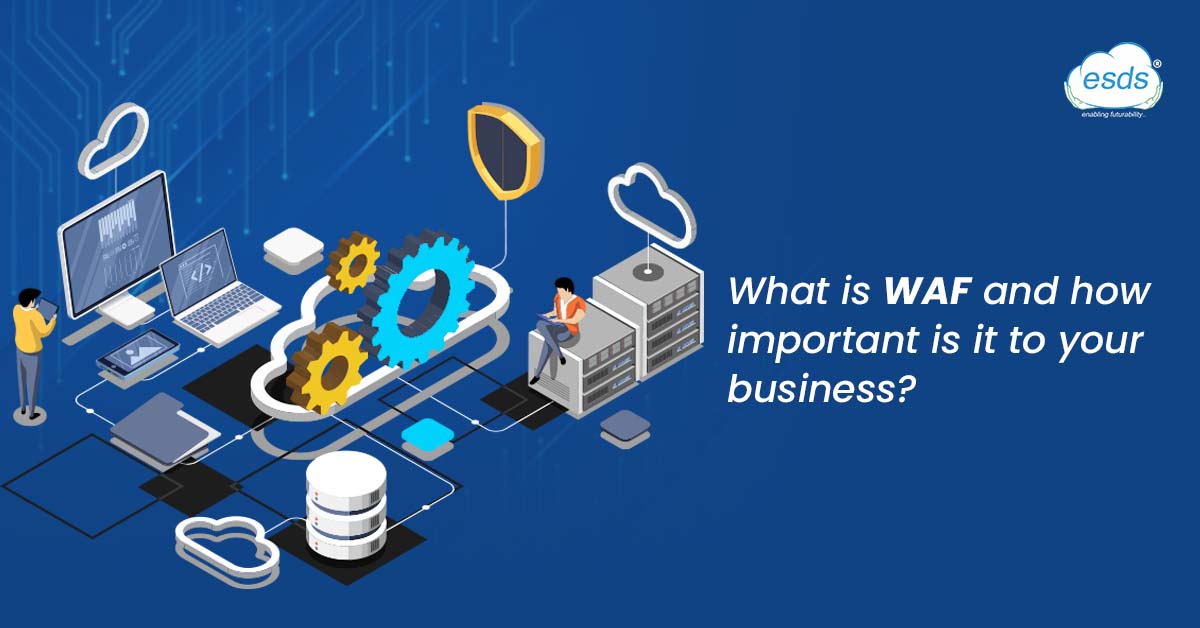What is WAF, and how important is it to your business?
Being fully knowledgeable about cybersecurity is challenging, especially given how quickly threats evolve. However, by learning more about cybersecurity tools, you may get a solid understanding of how cyberattacks operate.

What is WAF?
A web application firewall, or web application security solution, is a reliable security solution for monitoring, filtering, and preventing incoming and outgoing data packets from an online application or website. Reverse proxies are often used to deploy WAFs, which can be host-based, network-based, or cloud-based.
In order to filter out suspicious or risky traffic, WAFs can be used as network traffic monitoring appliances, server plugins, web application security solutions, or cloud services. They analyze each packet and evaluate application layer logic in accordance with rules.
Web Application Firewalls Types

Network-based WAF
Implemented locally to reduce latency and is typically hardware-based. However, this WAF type is the most expensive and requires physical equipment storage and upkeep.
Host-based WAF
It can be completely incorporated into an application’s software. This approach is more adaptable and less expensive than network-based WAFs, but it uses a lot of local server resources, is difficult to set up, and can be expensive to maintain. A host-based web application security solution frequently requires hardening and customization, which can be time-consuming and expensive.
Cloud-based WAF
A cost-effective, readily implemented solution that, in most cases, does not ask for a large initial outlay. Instead, customers pay a monthly or yearly subscription fee for security as a service. Regular updates to a cloud-based web service protection solution can be performed without the user’s involvement and at no additional expense. However, since you depend on a third party to maintain your WAF, it’s crucial to make sure cloud-based WAFs have enough customization choices to adhere to the business requirements of your firm.
Why Is WAF Security Important?
A growing number of companies are discovering the value of web application security solutions, including social networking service providers, digital banking, and mobile application developers. A WAF can assist you in securing critical information and preventing leakages, such as client records and payment card information.
Businesses often store the majority of their sensitive data in a backend database that is accessible via web applications. Businesses are using mobile apps and IoT devices more frequently to streamline business interactions, with many online transactions taking place at the application layer. For access to this data, attackers frequently target programs.
Due to its wider range of inspection capabilities, a WAF offers greater web protection than an intrusion prevention system (IPS) by itself. An IPS can be compared to a sniffer dog using the earlier comparison. If the dog detects the fragrance of a material that they have been trained to find inside the car, they will become suspicious. That would be beyond the capabilities of the WAF. Regardless matter whether something is hidden from view or has no fragrance, it can find it and identify its presence. The best use of a WAF is as a part of a defense-in-depth strategy, which involves incorporating numerous technological layers into your cloud security management program.
WAF Capabilities and benefits

Typically, web application firewalls provide the following functions and features:
Attack signature databases
Attack signatures are patterns in traffic, such as request types, strange server answers, and known malicious IP addresses, that may point to malicious activity. Earlier WAFs relied heavily on attack pattern databases, which were less efficient against fresh or undiscovered attacks.
AI-powered traffic pattern analysis
Behavioral analysis of traffic patterns is made possible by artificial intelligence systems, which use behavioral baselines for different forms of traffic to find anomalies that point to an attack. By doing so, you can identify assaults that don’t follow well-known malicious patterns.
Application profiling
This involves looking into an application’s structure, including the common queries, URLs, values, and allowed data types. This makes it possible for the WAF to recognize and deny potentially malicious requests.
Customization
The security guidelines that apply to application traffic can be set by operators. As a result, enterprises are able to tailor WAF behavior to their own requirements and stop the blockage of genuine traffic.
DDoS protection platforms
A cloud-based infrastructure that defends against distributed denial of service (DDoS) assaults can be integrated. The DDoS defense platform, which can manage a large volume of attacks, can receive traffic if the WAF detects a DDoS attack.
Real-world use cases for a WAF
A WAF can defend against well-known security risks like SQL injections, in which hackers insert malicious code to change the data already present on your system. A successful assault of this kind may lead to void transactions, destroyed data, or the exposing of sensitive data. However, if a WAF is in place, it employs input validation and database-level security measures to thwart SQL injections.
Credential stuffing can also be prevented by a WAF. When login credentials are taken, an attacker can then be launched. Even though the application may not have been designed to notice and defend against this kind of attack, it is safe and secure since a WAF is in place. You can avoid distributed denial of service (DDoS) attacks by using a WAF. Hackers flood the application with requests during a DDoS attack. Your program will subsequently slow down or stop entirely as a result. Additionally, a non-functioning or subpar application typically results in lost revenue.
A WAF’s benefit is its ability to defend against unidentified threats, which are continually evolving risks. Unlike classic firewalls, it can detect threats that use permitted protocols like HTTP. Applications evolve over time; thus, a WAF needs to be kept up to date with rules and configuration options to guarantee the highest level of security.
The Necessity for your business to have a managed WAF

1. Knowledge, expertise, and abilities
Managed WAF has the benefit of expert knowledge and abilities, ensuring proper web application security solution deployment. Instead of being left in a detection state, WAF reads the logs frequently, keeps track of them, and takes any necessary action.
2. Cybersecurity first.
In the event of a managed web application security solution, business owners and staff can totally concentrate on the core business while cybersecurity is handled by certified professionals. A managed WAF would prioritize the web application’s security by promptly thwarting the assault, enabling the consumer to make a transaction.
3. Manage dynamic applications
Applications must be nimble because of changes in client needs and technological advancements. According to business requirements, applications must be updated often, which necessitates a difficult change management procedure. Professional security service providers like ESDS guarantee that the client systems guarantee effective change management.
4. Dedicated time
To survive the diverse and changing nature of business, the WAF needs to be adjusted and tuned frequently. This means that maintaining tight security requires a person who is committed to operating a WAF with their time, professional knowledge, and abilities.
5. Staying updated
Existing threats are many, and new attack methods are being used daily across the globe. Managed WAFs are equipped with the latest threat detection and blocking technology and receive frequent updates. Regular firewalls that were integrated into the system did not need to be modified or updated constantly in response to the environment, but web application security solutions do.
The final Word
Any organization, irrespective of size, should employ a WAF to maintain the security of its network. The cost of dealing with an avoidable security breach can be avoided with the use of a web application firewall solution, which is a very effective and economical security solution. ESDS eNlight WAF is a specially engineered Web Application security solution that allows you to filter incoming and outgoing web traffic and block threats like never before.
- Why does your business need Endpoint Detection and Response (EDR)? - May 15, 2024
- Are your business endpoints completely secure? - March 26, 2024
- Is Colocation key to transforming your data center management strategy? - March 22, 2024
